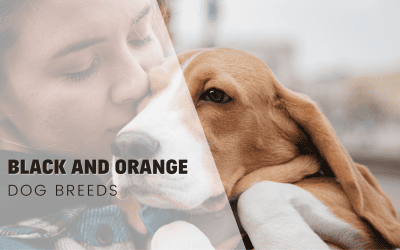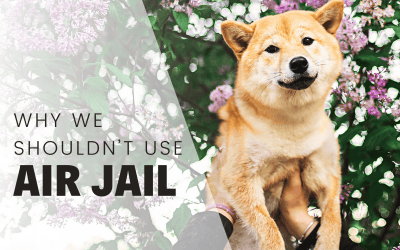Many dog owners can attest to picking up after their pets during routine walks or backyard cleanups, undoubtedly a less glamorous part of the relationship we share with our canine friends. But did you know that these seemingly mundane moments could be a wealth of essential information about your dog’s health?
Welcome to our comprehensive guide to dog poop, where we use your dog’s bowel movements to explain what is going on inside! I’ve found it really useful to know these things so, I decided to create a resource we designed to shed light on a topic often discarded—literally and figuratively. However, as unsavory as it might seem, observing and understanding your dog’s feces is an integral part of responsible pet ownership. The condition of their poop can provide valuable insight into their dietary habits, digestion process, and overall health status—giving you the information you need to ensure your dog is happy, healthy, and high-spirited.
Just as well, it could also raise early warning signals to help you detect health issues that, if caught early, could be easily managed.
In this guide, we’ll take you through what different colors, consistencies, and sizes of dog poop might indicate about your furry friend’s health and well-being. We’ll also provide useful advice on when it might be time to seek veterinarian help, as well as tips on how you can improve your pet’s digestive health.
So, grab your poop bags (and perhaps a strong stomach)—it’s time to unravel the untold story that lies within your dog’s poop. It’s not merely waste—it’s a tale of health, ready to be decoded.
Why You Should Look At Your Dog’s Poop
Dog poop might not be the most pleasing thing to look at, but it plays a crucial role in monitoring a dog’s health. Here’s why:
- Indicator of General Health: Just like humans, a dog’s poop can provide significant insight into its overall health and wellness. Changes in color, consistency, or size can oftentimes be an early indicator of potential health problems that might otherwise go unnoticed.
- Digestive Health: The quality of your dog’s poop is a direct measure of its digestive health. Healthy feces usually indicate a properly working digestive system, while abnormalities can be a sign of indigestion, infection, or internal issues.
- Nutritional Health: Examining your dog’s poop can also help you understand whether their diet is properly meeting their nutritional needs. For instance, overly hard or soft stools may suggest a need to adjust what you are feeding your dog.
- Parasitic Infections: Dog poop can be a breeding ground for various parasites. If you notice unusual elements like white specks in their stool, it could be a sign of a parasitic infection, such as worms.
- Early Disease Detection: Many diseases first manifest themselves in changes to fecal matter. Keeping tabs on your dog’s poop could be instrumental in catching diseases early, aiding in quicker and more effective treatment.
Ignoring your dog’s feces might mean missing out on valuable information about their health. Being aware of your dog’s poop, therefore, is not just about cleaning up after them—it’s about maintaining and promoting their well-being.
When This is Really Important
Understanding our pet’s poop is always important, it can tell you everything from intestinal parasites to dietary imbalances or incompatibilities. This is a really good way to get insight if you’re feeding fresh food or a raw food diet. And whilst it won’t replace diagnostic tests, it’s the single best way (in my opinion!) to find problems before they become a problem.
Guide To Dog Poop
The ideal dog stool has several characteristics that indicate a healthy digestive system (also called the GI tract)
Most importantly, the color should be a consistent chocolate brown, which tends to signify that digestion is working as it should. The consistency of the poop should be firm — not too hard or too soft. You should be about to pick it up without leaving much behind. This implies that the dog is properly hydrated and eating a balanced diet. The size of your dog’s poop should be proportionate to their food intake and remain reasonably constant, assuming their diet is balanced and their food is being efficiently digested. As far as the content goes, the inside of healthy poop shouldn’t look any differently from the outside.
Colour
The color of your dog’s poop can indicate a variety of things about their health and diet. Here’s what your dog’s poop color says about what’s going on inside.
- Brown: Brown is the standard color for dog poop and usually suggests that your dog’s digestive system is functioning correctly.
- Brown with White Specks: White specks in their stool are not normal. They can be remnants of debris and material, but they can also indicate a sign of parasitic intestinal infections, such as worms.
- Black or Very Dark: Black stool or very dark feces can indicate bleeding in the upper digestive tract. This can also be a sign that your pup has eaten something incredibly rich, e.g. if you raw feed they may have had a lot of offal.
- Yellow: Yellow-colored poop can mean a simple stomach upset, or it might indicate that something your dog ate is not agreeing with them.
- Orange or Yellow: This could be caused by a liver or bile duct problem.
- Green: A green poop could be caused by eating grass or might suggest a gallbladder issue as bile finds its way into the poop, changing it to green dog poop.
- Gray or Greasy: Gray, greasy stools might indicate an issue with the pancreas or bile duct.
- White: White stool colouration often comes with an excess of calcium, often with dogs fed a raw diet this is a chalky-white poop which indicates the diet has too much bone.
Remember that while stool color can provide helpful hints to your dog’s health, you should not be entirely reliant on it, and any concerns should be addressed to a veterinarian.
Consistency
The consistency of your dog’s poop can provide valuable insights into their digestive health:
- Ideal Consistency: Healthy dog poop should be firm and somewhat tubular in shape. It should be easy to pick up and not break apart easily.
- Soft or Watery Poop: If your dog’s poop is consistently soft, mushy or watery, it can indicate diarrhea, which could be due to several factors, including changes in diet, stress, infection, or illness.
- Hard and Dry Poop: If your dog’s poop is consistently coming out as hard stools, dry, or appears difficult to pass, it could suggest that your dog is dehydrated or needs more dietary fiber, or that something about their diet isn’t necessarily agreeing with them.
- Mucus or Blood: Mucus or blood (red streaks) in your dog’s stool suggests inflammation and could be indicative of serious conditions such as parvovirus or colitis.
- Fecal Scoring Systems: Veterinarians often utilize fecal scoring systems to measure the health of a dog’s poop based on its consistency.
Content
The content of your dog’s poop can tell a lot about their overall health and wellbeing and reflect any dietary or health issues:
- Fur content: Seeing big clumps of fur in the stool could be a sign of over grooming, which potentially results from allergies or skin disease.
- Foreign materials: Sometimes dogs accidentally ingest materials such as grass, plastic, rocks, or cloth. If you notice these in your pup’s stool, it could indicate a behavioral issue. Alternatively, it could be a sign that your dog is attempting to resolve a dietary deficiency or upset. Obviously sometimes we’re looking deliberately for those foreign objects.
- Parasites: If you notice worms or other parasites in your dog’s stool, this is a clear indicator of an infection that should be treated right away.
- Undigested food: If you notice undigested food in your dog’s stool, that could mean that food is moving through the dog’s intestines too quickly and not being properly digested. It could also signal a problem with the dog’s diet in terms of nutritional composition or balance.
- Volume changes: An increased or decreased volume of poop can indicate dietary issues or health problems. For instance, a sudden increase in volume might suggest that your dog is not digesting their food properly.
Remember, any consistent issue or unusual findings in your pup’s poop should be brought to your vet’s attention, as these could be indicators of more serious health concerns.
Coating
The coating or outer layer of a dog’s poop can offer clues about your pet’s health:
- Normal Poop: Healthy dog poop is usually encased in a thin, almost invisible, mucus-like membrane as a result of normal digestive processes.
- Mucus or Slimy Poop: If your dog’s poop has a thick, slimy, or jelly-like coating, it could indicate irritation in the large bowel. This could be a sign of colitis, an infection, or other potential issues with your dog’s digestion.
- Bloody Coating: If you notice a red coating on your dog’s poop, it may indicate the presence of blood. If the blood is fresh, it can suggest the bleeding is occurring lower down in the intestinal tract.
Remember, a sudden change in your dog’s stool’s appearance, like a coating that is not usually present, might suggest an underlying health problem. In that case, it’s important to consult with a veterinarian.
Size
The size of your dog’s poop can yield important insights into their overall health and diet:
- Normal Poop Size: Usually, the size of your dog’s poop correlates with their size and the amount they eat. It should be relatively consistent, compact, and not overly small or excessively large.
- Small, Hard Poops: If your dog’s stool is tiny and hard, like little rocks, it may be a sign that your dog is constipated. This could possibly be due to eating too much fiber or not drinking enough fluids.
- Large, Loose Poops: If the poop is larger than usual and also loose, it might indicate that your dog’s food isn’t being digested completely, causing larger volumes of waste. It can potentially signal issues with the dog’s diet or a possible health problem affecting digestion.
- Increase or Decrease in Size: Any significant increase or decrease in your dog’s poop size should be watched closely. This could suggest a variety of issues, ranging from dietary changes, problems with nutrient absorption, to other potential health concerns.
As always, persistent changes to your dog’s stool should be discussed with a vet to ensure their health is not at risk.
Smell
The smell of your dog’s poop can give you some insights into their overall health and gastrointestinal conditions:
- Mild Odor: A mild odor is usually normal and to be expected from dog poop. Remember, every dog’s feces will naturally have a certain smell due to the breakdown of food during the digestive process.
- Strong, Foul Smell: If your dog’s feces consistently have a significantly stronger or fouler smell than they usually do, it could potentially indicate a variety of issues. These could include a gastrointestinal infection, a diet that’s not agreeing with them, an imbalance of bacteria in their gut, or even a digestive condition causing malabsorption.
- Sudden Change in Odor: Any sudden and drastic change in the smell of your dog’s poop that persists should warrant attention. It could potentially signal underlying health issues that need to be checked out.
As always, if you notice consistent changes or something that concerns you about your dog’s poop smell, it would be wise to consult with a vet for a full assessment and to be sure your pet is healthy.
Note: If you see any oddness in this that you’re not sure about it’s a really good idea to contact your veterinarian!
Diet Is Important
You may have noticed throughout this discussion that the food you feed is one of the single most important components in your pups poop, so a diet change, food intollerance, food allergies or the introduction of a new food might be causing you concern. Which is very understandable. Sometimes monitoring a change for a few days can highlight whether poop problems are health problems or just food problems.
But a healthy stool? Is the single best indicator that your dog’s food suits them! And if it’s not? Well, maybe chat to your nutritionist about a new diet for your pup.
The Poop Holds Information!
Wrapping up, monitoring your dog’s feces, though not the most pleasant task, plays a significant role in keeping tabs on your pet’s health. Aspects like color, consistency, size, and any unusual additions give vital clues about your dog’s overall wellness. A shift in these attributes could hint at possible health issues, even before other symptoms manifest. Therefore, it’s crucial to familiarize yourself with what’s typical for your dog and take note of any consistent deviations. While it may seem a bit uncomfortable, this act of vigilance can make a world of difference to your pet’s well-being. Remember, serving as a responsible pet parent involves more than playtimes and cuddles, and sometimes means dealing with the less appealing aspects of care, all with the aim of ensuring the continued health and happiness of your dog.







0 Comments